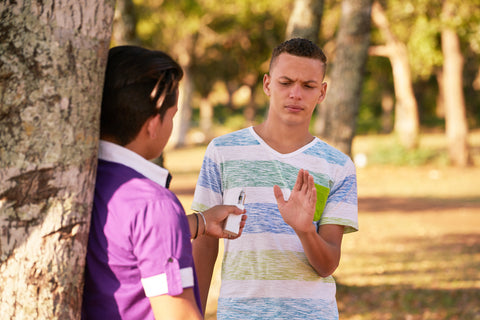Peer Influence – Good and Bad
Blog · May 23, 2019

Young children depend on their parents, teachers, and the other adults in their lives to model healthy behavior, social cues, and attitudes. As children grow into adolescence and spend more time with friends and less time with parents and siblings, their spheres of influence change. The power of peer behavior as an influence starts to accelerate and drive more decision-making.
We typically think of peer pressure as a negative force, but peer pressure and peer influence can be positive too. Consider how the teen with friends who study hard and get good grades can inspire her to hit the books and take her studies more seriously. Similarly, a friend who volunteers at a local hospital after school can help show other teens the value in contributing to their community and demonstrate that helping others can be rewarding. In these situations, the behavior and attitudes of positive pro-social peers set positive norms and expectations, and these positive influences promote other positive attachments and mitigate negative influences.
Teens who associate with negative influencers can find themselves being pushed to vape, drink alcohol, or engage in other risky behavior. This pressure doesn’t have to be active. A respected peer engaging in risky behavior acts as an invitation to others to engage in the same negative behavior. Teens often pressure themselves to engage in the behavior of their peers based on the assumption that doing so is necessary to fit in. Without a strong network of positive, pro-social friends engaged in positive activities to counter negative peer influence, many teens find themselves following the path of least resistance.

"We typically look at peer pressure as an active, negative force, but peer pressure and peer influence can be positive too. Consider how the teen with friends who study hard and get good grades can inspire her to hit the books and take her studies more seriously."
During adolescence, the decision-making centers of the brain are still developing. Adolescents depend on outside influences to assist their decision making whether they realize it or not. Educators and other adults can help adolescents develop confidence and positive self-esteem by giving them the strategies and tools they need to make the right decision even when it isn’t popular or cool. Equipping children with these resources and support enables them to make decisions that are healthy and consistent with their long term goals.
The internal pressure to fit in and belong is compelling. It can override positive institutional factors if it is not mitigated by the self-awareness and social awareness to find positive peer groups and reject negative influences and pressures. Teens who can differentiate positive and negative influences are better prepared to stop to consider multiple paths to reaching their goals. They are more likely to choose to resist negative behavior and accept and prioritize healthy choices.
The Too Good programs are designed to help educators guide students to interact more positively with one another and manage peer pressure and influence, giving them the tools they need to make better choices.
